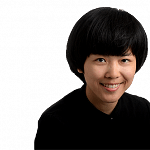The graphic designs and illustrations of Dutch artist M.C. Escher are well-known examples of optical-illusion art. They are revered for their skilful marriage of mathematics and art, and widely referenced in popular culture, including posters, commercials and cartoons.
A new exhibition at the ArtScience Museum, which opened last Saturday, features more than 150 original works by the artist, allowing visitors to see his detailed designs in person and up-close.
But the show, which includes masterpieces drawn from private collections around the world, does more than exhibit Escher's most prominent works, says its curator, Dr Federico Giudiceandrea, 61.
"What you see here is the whole story of Escher, starting from his works on nature and landscapes. You get to see how his thinking and art evolved and you come to understand him much better," says Dr Giudiceandrea, a connoisseur and collector of Escher's works, as well as the chief executive of a timber equipment company in Italy.
-
BOOK IT /JOURNEYTO INFINITY: ESCHER'S WORLD OF WONDER
-
WHERE: ArtScience Museum, Marina Bay Sands, 10 Bayfront Avenue
WHEN: Till first quarter of next year,10am to7pm daily
ADMISSION: $14 (adult) and $7 (child) for Singapore residents, otherwise $17 (adult) and$10 (child)
Escher's early works from the 1920s and 1930s show his interest in nature and landscapes, and his keen observation of the mathematical rules of geometry at work in the world around him. These include his prints of realistic insects and flowers, and scenes from the Italian countryside, which he visited during this time.
In 1936, his trip to southern Spain marked a turning point in his work. Moorish architectural landmarks such as the Alhambra Palace in Granada left him deeply inspired by the geometric patterns he saw on the walls and arches. This led him to produce meticulous tessellations, which he developed further by making the repeated motifs morph across the patterned surface.
By the 1950s, he was interacting with scientists and exploring through his art, perspectival illusions due to human perception, and visual representations of infinity. Some of his most famous works, including Ascending And Descending, Print Gallery and Relativity, date from this period and are part of the show.
His last work, a woodcut print titled Snakes, was made in 1969. He died in 1972 at the age of 74. His art, however, continues to influence architects, fashion designers and film-makers.
The exhibition includes contemporary works inspired by Escher, such as a large-scale tessellation installation by artist and architect Richard Hassell, co-founder of the Singapore-based architectural firm Woha.
Also featured in the show are installations and hands-on activities that translate the ideas in Escher's art into tactile experiences.
On Thursday evening, the museum will host a site-specific dance performance, Mirror Of Clandestine Blooms, by home-grown dance company Arts Fission. The performance, conceived by choreographer Angela Liong in collaboration with the company's dancers, seeks to interpret Escher's mathematical and artistic ideas through dance.
The museum's executive director Honor Harger, 41, says: "This show will give our visitors the opportunity to delve deeper into Escher's logic-defying world."



